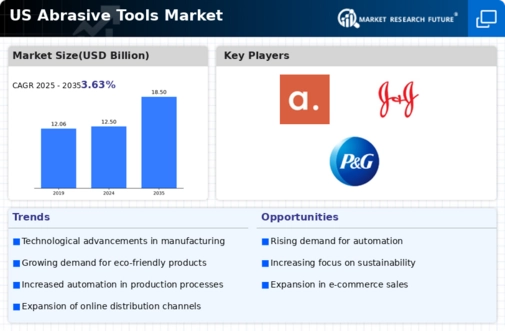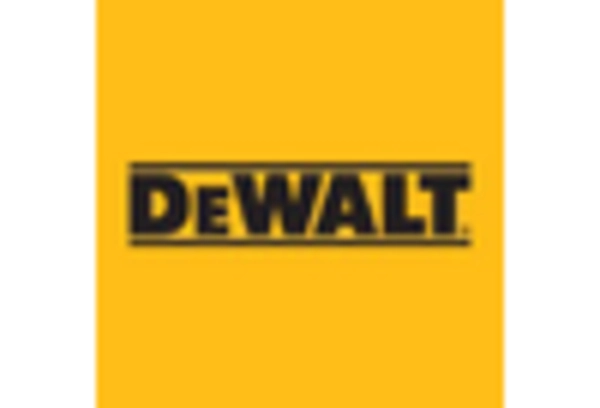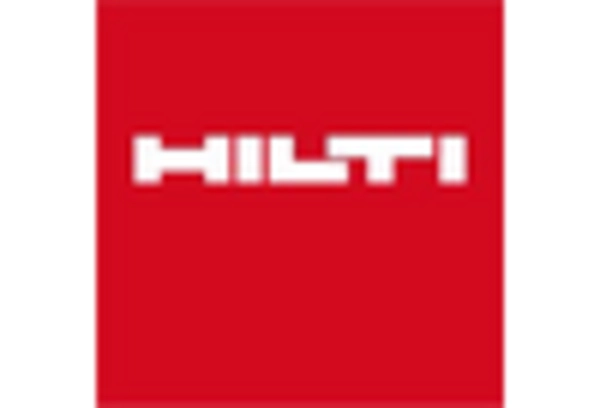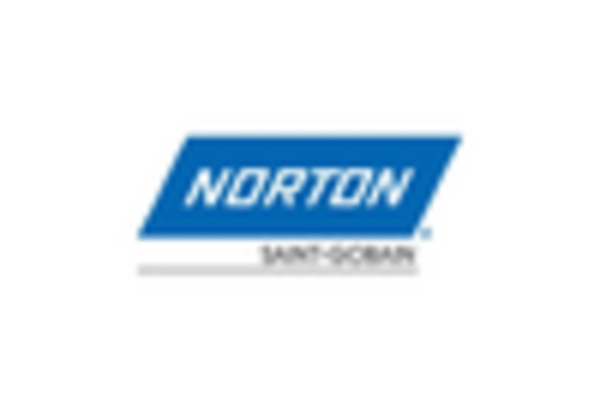Expansion of Automotive Industry
The abrasive tools market is significantly influenced by the expansion of the automotive industry in the US. With the automotive sector projected to grow at a CAGR of 4.5% through 2025, the demand for abrasive tools is expected to follow suit. These tools are essential for various processes, including surface preparation, finishing, and polishing of automotive components. As manufacturers increasingly adopt advanced manufacturing techniques, the need for high-quality abrasive tools becomes critical to ensure product reliability and performance. This growth in the automotive sector is likely to create new opportunities for abrasive tool manufacturers, as they adapt to the evolving needs of the industry.
Rising Demand in Manufacturing Sector
The abrasive tools market is experiencing a notable surge in demand, primarily driven by the robust growth of the manufacturing sector in the US. As industries such as automotive, aerospace, and metalworking expand, the need for high-quality abrasive tools becomes increasingly critical. In 2025, the manufacturing sector is projected to contribute approximately $2.4 trillion to the US economy, indicating a potential increase in the consumption of abrasive tools. This growth is likely to be fueled by the ongoing trend of automation and precision engineering, which necessitates the use of advanced abrasive tools for efficient production processes. Consequently, the abrasive tools market is positioned to benefit from this upward trajectory, as manufacturers seek to enhance productivity and maintain competitive advantages.
Growing Focus on Quality and Precision
The abrasive tools market is witnessing a growing focus on quality and precision among end-users, particularly in sectors such as aerospace and automotive. As these industries demand higher standards for their products, the need for reliable and high-performance abrasive tools becomes paramount. In 2025, it is estimated that the aerospace sector alone will require abrasive tools worth over $500 million, reflecting the increasing emphasis on precision engineering. This trend is likely to push manufacturers to develop tools that meet stringent quality standards, thereby driving innovation and competition within the abrasive tools market. As companies strive for excellence, the demand for specialized abrasive tools is expected to rise.
Technological Innovations in Abrasive Tools
The abrasive tools market is benefiting from continuous technological innovations that enhance product performance and efficiency. Manufacturers are increasingly investing in research and development to create advanced abrasive materials and tools that offer superior durability and precision. For instance, the introduction of ceramic and diamond abrasives has revolutionized the market, providing users with tools that can withstand higher temperatures and deliver better results. As these innovations become more prevalent, they are likely to attract a broader customer base, including industries that require specialized applications. The ongoing evolution of abrasive tools is expected to drive market growth, as businesses seek to leverage these advancements for improved operational efficiency.
Increased Investment in Construction Projects
The abrasive tools market is poised for growth due to heightened investment in construction projects across the US. With infrastructure development gaining momentum, the demand for abrasive tools is expected to rise significantly. In 2025, the US construction industry is anticipated to reach a value of $1.5 trillion, driven by government initiatives and private sector investments. This influx of capital is likely to result in a greater need for cutting, grinding, and polishing tools, which are essential for various construction applications. As contractors and builders prioritize quality and efficiency, the abrasive tools market is expected to see a corresponding increase in sales, reflecting the industry's overall expansion.

















Leave a Comment